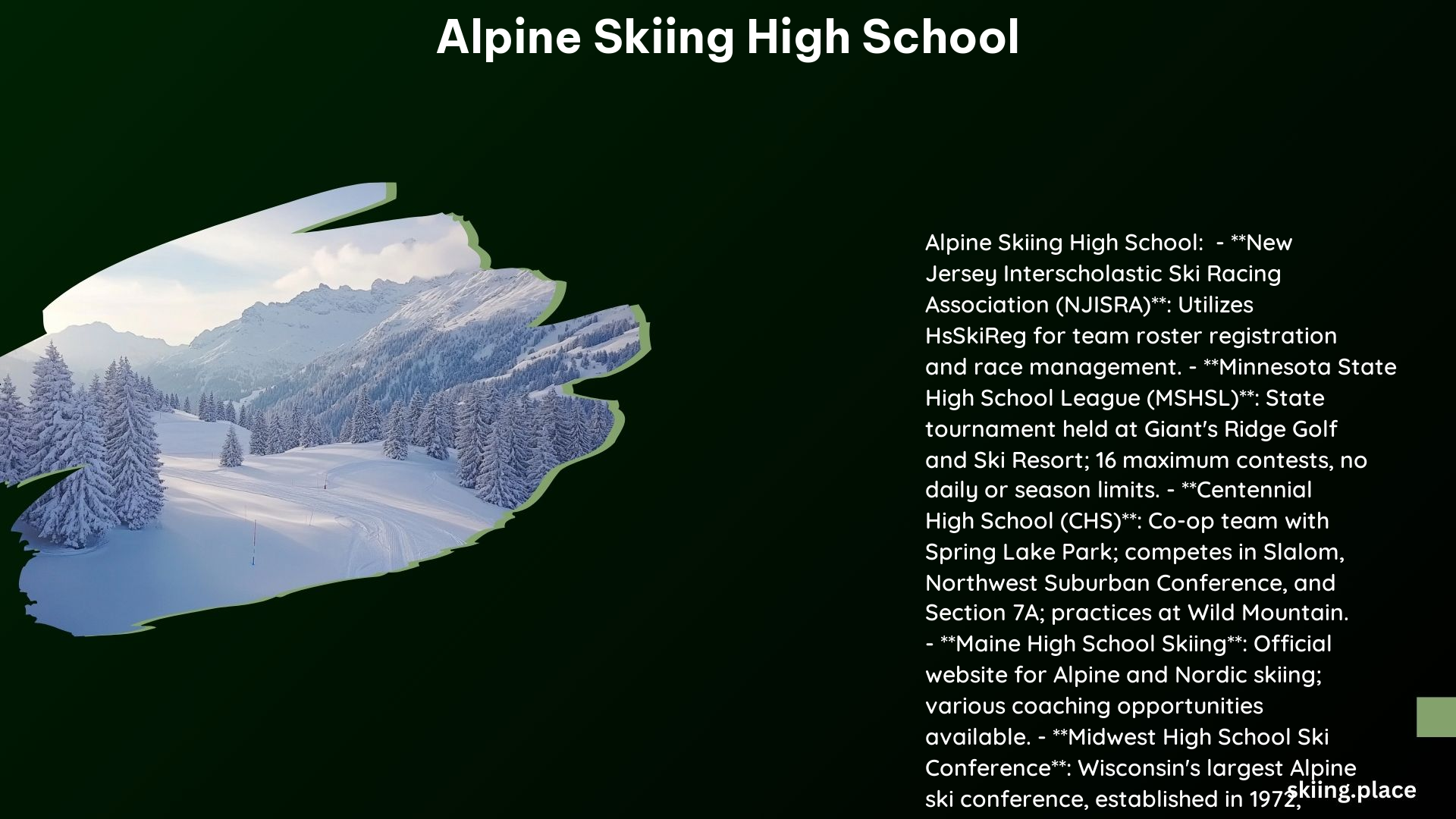High school alpine skiing is a popular winter sport that offers students the opportunity to compete in downhill skiing events. However, the costs, equipment requirements, and training differences between high school and more competitive USSA/FIS programs can be significant. In this blog post, we’ll explore the various aspects of alpine skiing in the high school setting.
What are the Costs Associated with High School Alpine Skiing?
Registration Fees
The registration fees for high school alpine skiing programs can vary widely depending on the school and location. For example, the Aspen Valley Ski & Snowboard Club charges between $3,400 and $10,650 for their programs, with additional parent work deposits ranging from $330 to $600. In contrast, Wayzata Public Schools require a participation fee, which does not cover the cost of ski equipment, lift passes, or helmets.
Equipment Costs
Skis, boots, and other equipment can be expensive, with costs ranging from a few hundred dollars for entry-level gear to several thousand dollars for high-performance equipment. Additionally, FIS-approved helmets are a required safety item for U14 athletes.
Travel Costs
Travel costs for competitions and training camps can be significant, especially if athletes need to travel to different locations for events.
Additional Expenses
Other expenses may include coaching fees, training camps, and other miscellaneous costs associated with the sport.
How Often Should Skis and Boots be Replaced?

Frequency of Replacement
The frequency of replacing skis and boots depends on factors such as skill level, frequency of use, and wear and tear. Generally, skis should be replaced every 3-5 years, and boots every 2-3 years.
Factors to Consider
Skiers who use their equipment frequently may need to replace it more often, while those who ski less frequently may be able to use their equipment for longer periods. Additionally, skiers who are progressing rapidly in their skill level may need to upgrade their equipment more frequently to accommodate their improving abilities.
What are the Differences in Training and Racing Between High School and USSA/FIS Programs?
Training Schedules
High school alpine skiing programs typically have a more limited training schedule compared to USSA/FIS programs, which often involve year-round training.
Coaching Styles
Coaching styles may differ between high school and USSA/FIS programs, with USSA/FIS programs often having more experienced coaches and a greater focus on high-level competition.
Competition Formats
High school alpine skiing competitions typically involve local and regional events, while USSA/FIS programs participate in national and international competitions.
Performance Expectations
The performance expectations for high school alpine skiing programs are generally lower than those for USSA/FIS programs, which often aim to produce athletes who can compete at the highest levels.
In conclusion, while high school alpine skiing can be a rewarding experience for students, the costs, equipment requirements, and training differences compared to more competitive programs should be carefully considered. By understanding these factors, families can make informed decisions about their child’s participation in this exciting winter sport.
References:
– Aspen Valley Ski & Snowboard Club. (n.d.). Alpine Programs. Retrieved from https://www.teamavsc.org/Alpine-Programs
– Wayzata Public Schools. (n.d.). Alpine Ski. Retrieved from https://www.wayzataschools.org/athletics/teams/winter/alpine-ski
– Verbier International School. (2020, February 11). Understanding Ski Racing Challenges and Costs. Retrieved from https://verbierinternationalschool.ch/understanding-ski-racing-challenges-and-costs/
– Mount Sunapee. (n.d.). Alpine Ski & Ride Programs for Kids. Retrieved from https://www.mountsunapee.com/the-mountain/more-options/alpine-programs.aspx
